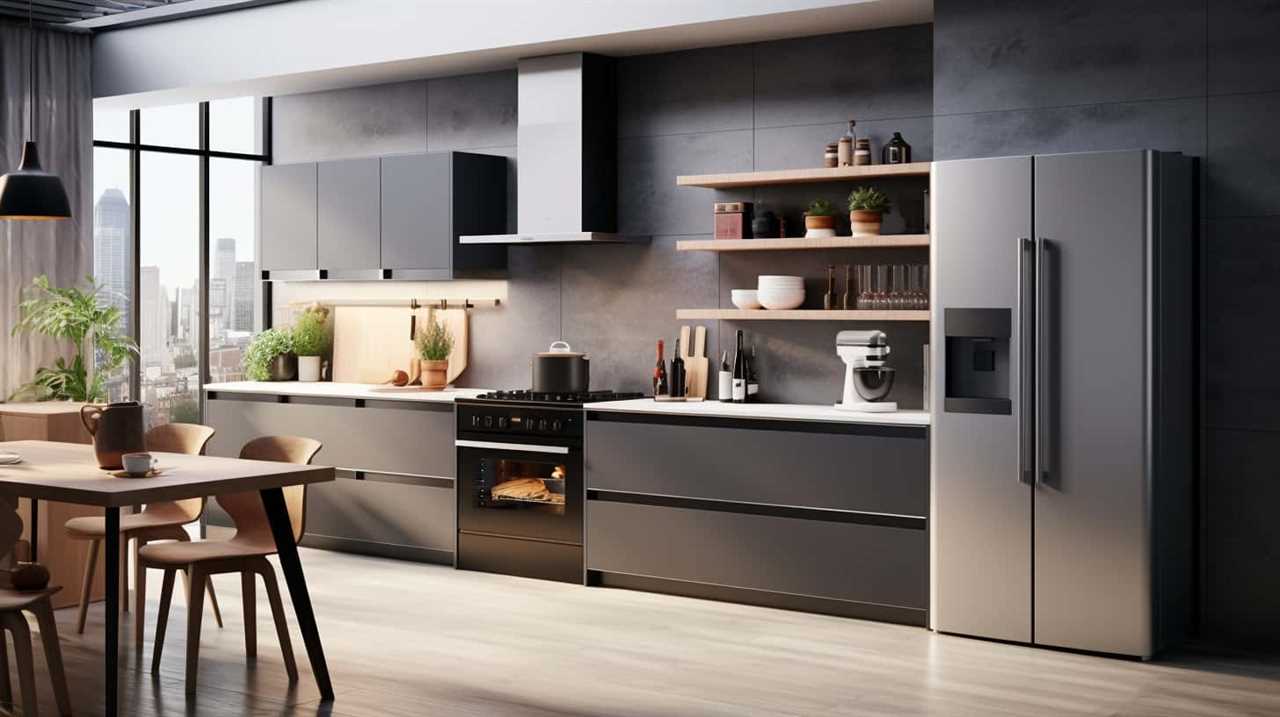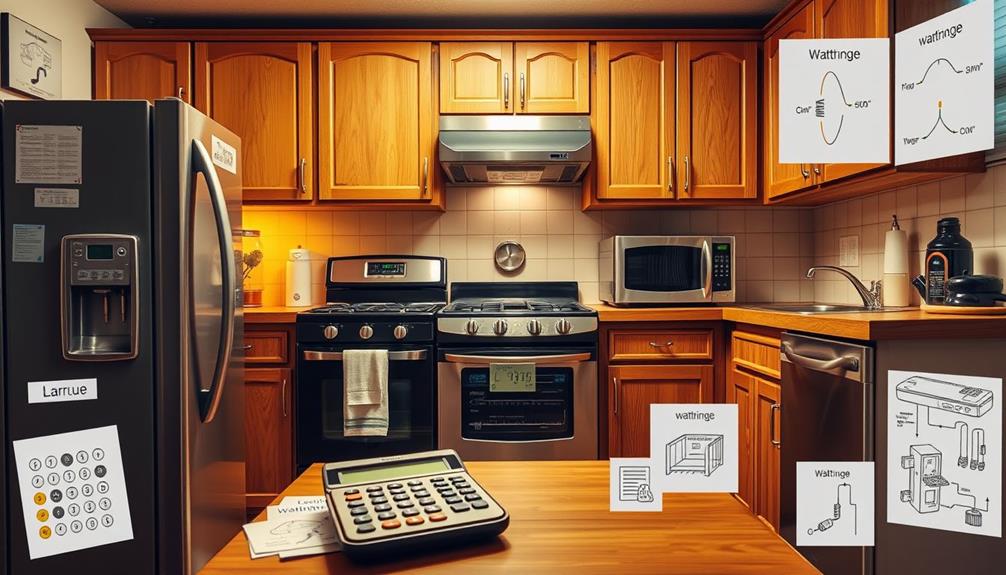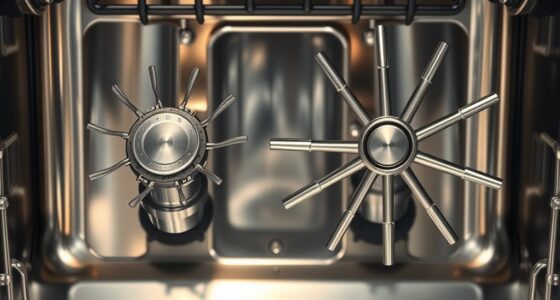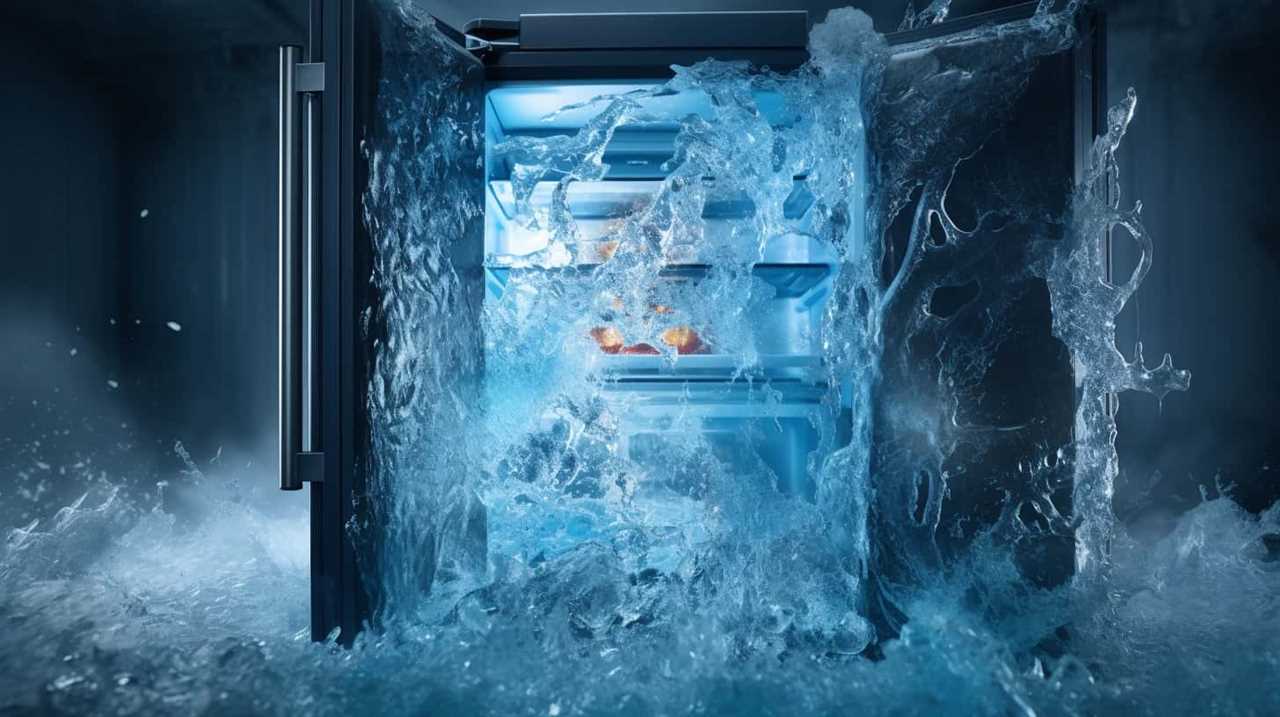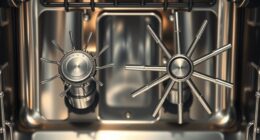We are all familiar with the risks of carbon monoxide (CO) poisoning from gas appliances, but what about electric appliances? Is it possible for them to emit this harmful gas?
In this article, we’ll delve into the science behind electric appliances and uncover whether they pose a risk for CO emissions. By understanding the potential risks and taking necessary precautions, we can ensure the safe use of electric appliances in our homes.
Let’s explore this topic further and empower ourselves with the knowledge to protect our loved ones.
Key Takeaways
- Electric appliances, such as electric stoves and dryers, do not produce carbon monoxide because they do not burn fuel.
- Proper ventilation and installation of carbon monoxide detectors are crucial for preventing accidental carbon monoxide poisoning.
- Malfunctioning or poorly maintained electric appliances, like water heaters or furnaces, can produce carbon monoxide, so regular inspection and maintenance are essential.
- Electric generators, if not properly ventilated, can produce carbon monoxide and should be used outdoors or in well-ventilated areas.
Understanding Carbon Monoxide: What Is It
To understand carbon monoxide, we must first grasp its composition and potential dangers.

Carbon monoxide (CO) is a colorless, odorless gas that’s produced when fossil fuels such as coal, gasoline, and natural gas burn incompletely. It’s important to differentiate between sources of carbon monoxide, as exposure to this toxic gas can have serious health effects.
When inhaled, carbon monoxide binds to hemoglobin in our blood, reducing its ability to carry oxygen to vital organs. This can lead to symptoms such as headaches, dizziness, nausea, and even death in high enough concentrations. It’s crucial to have proper ventilation and to install carbon monoxide detectors in our homes to prevent accidental poisoning.
Now, let’s delve into differentiating between gas and electric appliances, as this plays a significant role in carbon monoxide production.
Differentiating Between Gas and Electric Appliances
Gas and electric appliances can be distinguished by their fuel sources, which has a direct impact on the production of carbon monoxide.

It’s important to differentiate between these two types of appliances in terms of safety and potential hazards.
Gas appliances, such as stoves, water heaters, and furnaces, use natural gas or propane as fuel. These appliances have the potential to produce carbon monoxide if not properly installed, maintained, or ventilated.
On the other hand, electric appliances, like electric stoves, water heaters, and dryers, don’t produce carbon monoxide because they don’t burn fuel. This makes electric appliances a safer option in terms of carbon monoxide poisoning.
However, it’s still crucial to ensure that all appliances are used and maintained according to the manufacturer’s instructions to avoid any other potential hazards.

How Electric Appliances Work
Electric appliances operate by using electricity as their power source. Understanding how electric appliances work is essential for their proper maintenance and optimizing their energy efficiency. Electric appliances convert electrical energy into useful forms of energy, such as heat or mechanical work, through various mechanisms.
For instance, electric stoves use heating elements to generate heat, while refrigerators use compressors and condensers to extract heat and keep the contents cool. To ensure the longevity and safety of electric appliances, regular maintenance is crucial. This includes cleaning the appliances, checking for loose connections, and replacing worn-out parts.
Additionally, improving the energy efficiency of electric appliances can help reduce electricity consumption and lower utility bills. This can be achieved by selecting appliances with energy-saving features, properly using them, and keeping them in good working condition.
Can Electric Appliances Produce Carbon Monoxide
Continuing our exploration of electric appliances, it’s important to address the potential production of carbon monoxide. While electric appliances are generally considered safe in terms of carbon monoxide emissions, there are a few exceptions and potential dangers to be aware of.
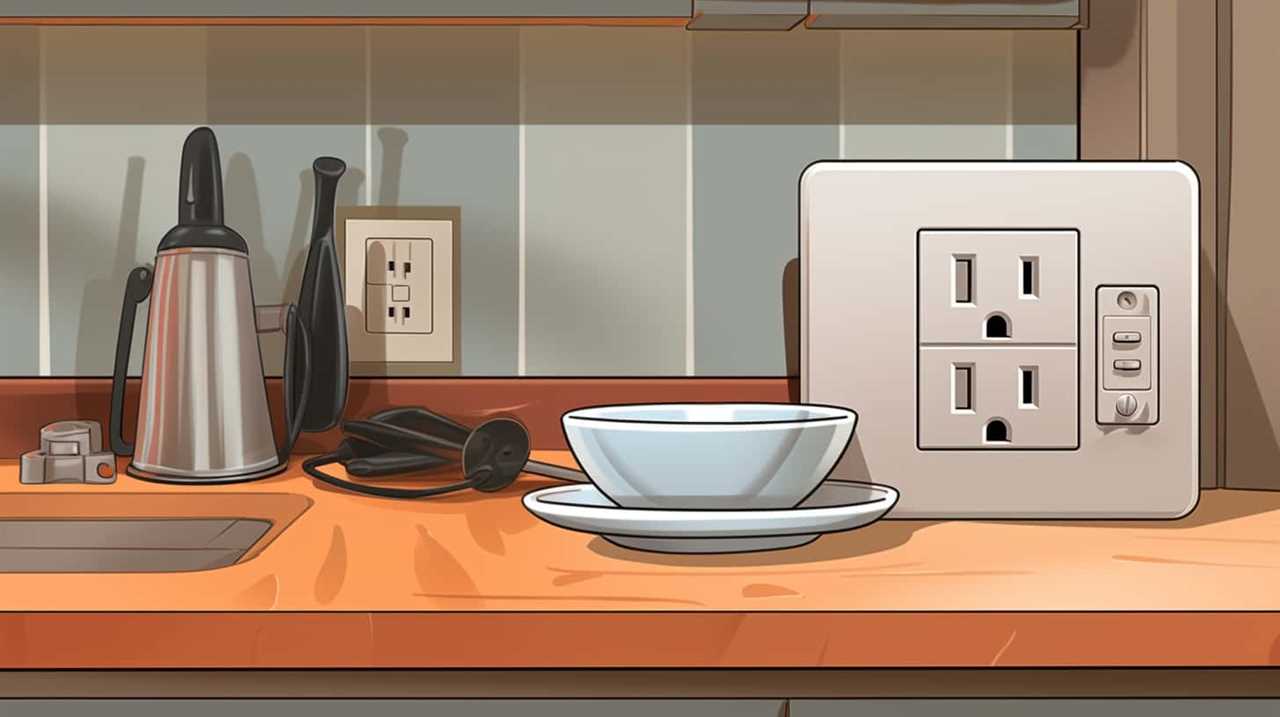
One such exception is the use of electric generators. These devices, often used during power outages, can produce carbon monoxide if not properly ventilated. It’s crucial to use generators outdoors or in well-ventilated areas to prevent the buildup of this deadly gas.
Additionally, malfunctioning or poorly maintained electric appliances, such as water heaters or furnaces, can also produce carbon monoxide. Regular inspection and maintenance of these appliances is essential for ensuring their safe operation and minimizing the risk of carbon monoxide exposure.
Potential Risks of Electric Appliances
Now let’s turn our attention to the potential risks associated with electric appliances.
While electric appliances are generally considered safe, there are still some concerns to be aware of.

One of the main concerns is the potential for carbon monoxide poisoning, which can occur if there’s a malfunction in the appliance or if it isn’t properly maintained.
It’s crucial to take preventive measures to ensure the safety of your home and avoid any potential hazards.
Electric Appliance Safety
One potential risk of electric appliances is the emission of harmful gases such as carbon monoxide. However, it is important to note that electric appliances themselves do not produce carbon monoxide, as they do not burn fuel like gas-powered appliances do. Nevertheless, electric appliances can still pose safety risks if they are not properly maintained or used. Regular electric appliance maintenance is crucial to ensure their safe operation. Here are some electrical appliance safety tips to keep in mind:
- Always read and follow the manufacturer’s instructions and safety guidelines.
- Inspect electrical cords for any damage or fraying and replace them if necessary.
- Avoid overloading electrical outlets or using extension cords for long periods.
- Regularly clean and dust appliances to prevent overheating.
By following these electrical appliance safety tips, you can minimize the risks associated with electric appliances and ensure a safe environment in your home.

| Electrical Appliance Safety Tips |
|---|
| 1. Read and follow manufacturer’s instructions |
| 2. Inspect electrical cords for damage |
| 3. Avoid overloading electrical outlets |
| 4. Regularly clean and dust appliances |
Carbon Monoxide Concerns
To address potential risks associated with electric appliances, it’s important to consider the concern of carbon monoxide emissions. Although electric appliances generally don’t produce carbon monoxide, there are a few exceptions to be aware of. These exceptions include:
- Gas-powered appliances that also have electric components, such as gas stoves with electric ignition systems. These appliances can produce carbon monoxide if there’s a malfunction in the gas combustion process.
- Electric generators that are improperly used or installed. These generators can produce carbon monoxide if they’re operated in an enclosed space or if the exhaust system isn’t properly vented.
- Faulty or poorly maintained electric appliances that emit carbon monoxide due to a malfunction or damage.
It is crucial to understand the dangers of carbon monoxide poisoning and take necessary precautions to prevent it, such as regularly inspecting and maintaining gas-powered appliances and ensuring proper ventilation for electric generators.
Preventing CO Poisoning
We must be vigilant in preventing carbon monoxide poisoning when it comes to electric appliances. While electric appliances themselves don’t produce carbon monoxide, there are potential risks associated with their use that can lead to CO poisoning.
One of the key steps in preventing CO poisoning is the proper installation and maintenance of carbon monoxide detectors. These devices are designed to detect the presence of carbon monoxide in the air and alert occupants to potential danger. It’s important to regularly check and replace the batteries in these detectors to ensure their effectiveness.

Additionally, it’s crucial to ensure proper ventilation when using electric appliances such as gas-powered generators or stoves. By being proactive in these preventive measures, we can significantly reduce the risk of CO poisoning and ensure the safety of ourselves and our loved ones.
Precautions for Using Electric Appliances Safely
When it comes to using electric appliances safely, there are a few common safety hazards to be aware of. These include electrical shocks, fires, and short circuits.
To prevent electrical accidents, it’s important to always follow the manufacturer’s instructions, keep appliances away from water, and regularly inspect cords and plugs for any signs of damage.
Common Safety Hazards
In order to ensure the safe usage of electric appliances, it’s crucial for individuals to be aware of the potential safety hazards associated with their operation. Here are some common safety precautions and electrical appliance maintenance tips that can help minimize risks:

- Regularly inspect electrical cords for any signs of wear or damage, and replace them if necessary.
- Avoid overloading outlets and extension cords to prevent overheating and potential electrical fires.
- Keep appliances away from water sources to reduce the risk of electrical shock.
By following these precautions and properly maintaining electric appliances, individuals can greatly reduce the chances of accidents or injuries.
It’s important to prioritize safety and stay informed about potential hazards to ensure the longevity and safe operation of electrical appliances.
Preventing Electrical Accidents
To ensure the safe usage of electric appliances and prevent electrical accidents, it’s essential for us to continue implementing precautions and practicing proper maintenance. One of the most important aspects of preventing electrical accidents is to be aware of the potential dangers and take necessary steps to mitigate them.
First and foremost, it’s crucial to regularly inspect and maintain all electrical appliances, cords, and outlets. Frayed cords or damaged appliances should be immediately replaced to prevent electrical fires. Additionally, it’s important to never overload electrical outlets and extension cords, as this can lead to overheating and potential fires.

Another important safety tip is to keep electrical appliances away from water sources to avoid electrical shocks. By following these electrical safety tips and being proactive in maintaining our appliances, we can significantly reduce the risk of electrical accidents.
Now, let’s move on to discuss the signs and symptoms of carbon monoxide poisoning.
Signs and Symptoms of Carbon Monoxide Poisoning
We experience symptoms of carbon monoxide poisoning through exposure to the gas. Carbon monoxide exposure can have both immediate and long-term effects on our health. It’s important to be aware of the signs and symptoms of carbon monoxide poisoning to protect ourselves and our loved ones. Here are some key indicators to look out for:
- Headaches
- Dizziness
- Nausea and vomiting
These symptoms may initially be mistaken for flu or other common illnesses, but they can worsen over time if left untreated. Long-term exposure to carbon monoxide can lead to more severe health issues, such as memory loss, heart problems, and even death. Therefore, it’s crucial to take immediate action if you suspect carbon monoxide poisoning.
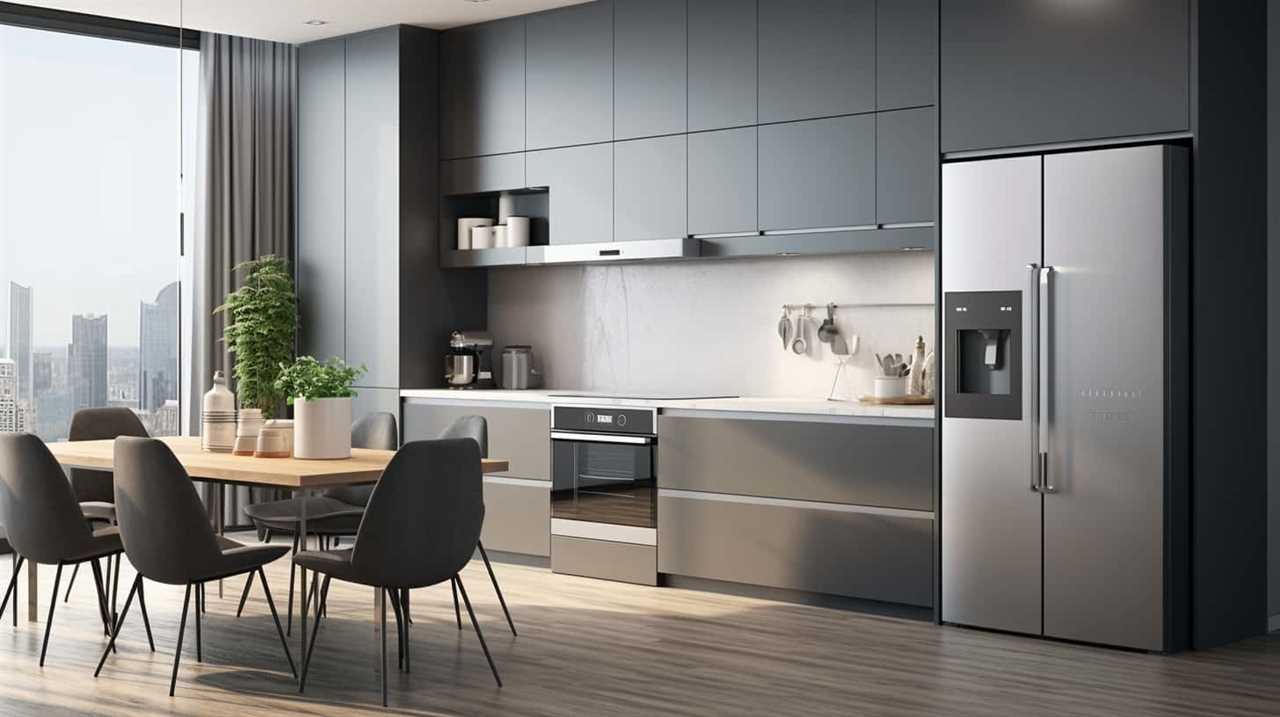
Now that we’re aware of the signs and symptoms, let’s move on to the next section where we’ll discuss tips for carbon monoxide detection and prevention.
Tips for Carbon Monoxide Detection and Prevention
Using carbon monoxide detectors is an effective method for detecting and preventing carbon monoxide exposure. These devices are specifically designed to detect the presence of carbon monoxide gas in the air and sound an alarm to alert occupants of potential danger.
It’s important to install carbon monoxide detectors on every level of your home, including outside each sleeping area. Regularly test the alarms to ensure they’re functioning properly. Additionally, consider purchasing carbon monoxide detectors that are interconnected, so if one alarm is triggered, all alarms in the house will sound.
It’s also crucial to replace the batteries in the detectors as needed and replace the entire unit every 5-7 years. By taking these precautions and being proactive with carbon monoxide detection, you can help ensure the safety of your household.

Frequently Asked Questions
Are Electric Appliances Completely Safe and Free From Carbon Monoxide Emissions?
Electric appliances, although generally safe, can still pose potential health risks due to long-term exposure. Proper maintenance and ventilation play a crucial role in reducing the risk of carbon monoxide emissions from these appliances.
Can Electric Appliances Emit Any Other Harmful Gases Besides Carbon Monoxide?
Electric appliances can emit harmful gases besides carbon monoxide, posing health risks and harming the environment. It is important to be aware of these risks and take necessary precautions when using electric appliances.
Are There Any Specific Types of Electric Appliances That Are More Likely to Produce Carbon Monoxide?
Electric appliance maintenance is crucial to minimize potential risks of carbon monoxide production. While all electric appliances don’t produce carbon monoxide, certain types like gas-powered generators and furnaces can if not properly ventilated or maintained.
Can Faulty Wiring or Electrical Malfunctions in Electric Appliances Cause Carbon Monoxide Production?
Faulty wiring dangers and electrical malfunction risks in electric appliances can lead to carbon monoxide production. It is crucial to address these issues promptly to ensure the safety of our homes and prevent potential harm.

Is It Necessary to Have Carbon Monoxide Detectors Installed Even if You Only Use Electric Appliances in Your Home?
It is important to have carbon monoxide detectors in homes with gas powered heating systems to prevent leaks. Additionally, proper maintenance and inspection of electric appliances can help prevent carbon monoxide production.
Conclusion
In conclusion, it’s important to understand that electric appliances don’t produce carbon monoxide.
By knowing the difference between gas and electric appliances, and following proper precautions for using electric appliances safely, we can mitigate the risks of carbon monoxide poisoning.
Remember to regularly check for signs and symptoms of carbon monoxide poisoning and install carbon monoxide detectors in your home for added protection.
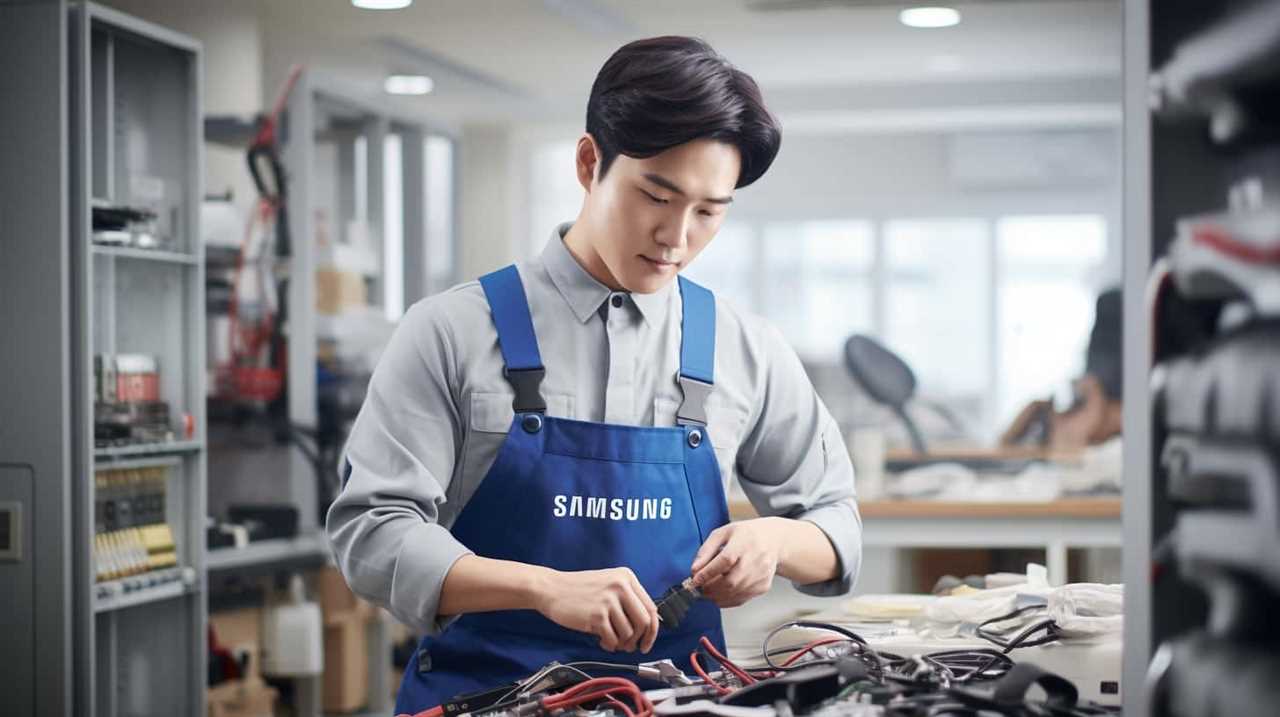
Stay informed and take proactive measures to prevent carbon monoxide-related incidents.
